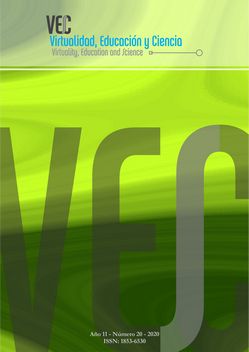The use of virtual tools in the teaching of history at the university
DOI:
https://doi.org/10.60020/1853-6530.v11.n20.27455Keywords:
university education; new technologies; virtual classroom; digital literacyAbstract
For some years now, education has been traversed by the introduction of virtual platforms that supplement classroom training and help customize the blended learning model. Such model is intended to change traditional education, which places the teacher in the role of the only agent of knowledge transmission, and to implement a new paradigm in which the teacher acts as a mediator between knowledge and students. This article is aimed at accounting for a pedagogical experience based on the use of virtual tools at the History of Argentine and Latin American Institutions subject. Such subject is part of the Basic Cycle of the Law Degree at the National University of Cuyo (UNCuyo). The main purpose of the teaching proposal was to reconsider a change in the teaching-learning strategies and open new involvement spaces in the way of communicating knowledge.
References
AREA, M. y PESSOA, T. (2012). De lo sólido a lo líquido: las nuevas alfabetizaciones ante los cambios culturales de la Web 2.8. Alfabetización mediática en contextos múltiples, Comunicar. Revista Científica de Comunicación y Educación. Recuperado de: https://www.revistacomunicar.com/pdf/preprint/38/01-PRE-12378.pdf
BARBERÀ GREGORI, E. y BADIA GARGANTÉ, A. (2005). El uso educativo de las aulas virtuales emergentes en la educación superior, en: Revista de Universidad y Sociedad del Conocimiento (RUSC), 2(2), pp. 1-12.
BAUMAN, Z. (2002). Modernidad líquida. Buenos Aires: Fondo de Cultura Económica Argentina.
BAUMAN, Z. y DESSAL, G. (2014). El retorno del péndulo. Buenos Aires: Fondo de Cultura Económica.
CASTELLANO, H. (2010). Integración de la Tecnología Educativa en el Aula: Enseñando con las TIC. Argentina: Cengage Learning.
COATEN, N. (2003). Blended e-learning, en: Educaweb, 69. Recuperado de: http://www.educaweb.com/esp/servicios/monografico/formacionvirtual/1181076.asp
CUESTA, E. M.; IBÁÑEZ, E.; TAGLIABUE, R. y ZANGARO, M. (2008). El impacto de la generación millennial en la universidad: un estudio exploratorio, en: XV Jornadas de Investigación y Cuarto Encuentro de Investigadores en Psicología del Mercosur. Facultad de Psicología - Universidad de Buenos Aires, Buenos Aires.
HOLMBERG, B. (2005). The evolution, principles and practices of distance education. Bibliotheks-und informationssystem der Universitat Oldenburg.
HOWE, N. y STRAUSS, W. (2000). Millennials Rising. The Next Great Generation. New York: Vintage Books.
MARSH, G.; MCFADDEN, A.; PRICE, B. (2003). Blended Instruction: Adapting Conventional Instruction for Large Classes, en: Journal of Distance Learning Administration, 6, (6). Recuperado de: http://www.westga.edu/~distance/ojdla/winter64/marsh64.htm.
OBLINGER, D. (2003). Boomers, Gen-Xers, and Millennials: Understanding the ‘New Students’. En: Educause Review, 38, (4), pp. 37-47.
PERRENAUD, P. (2008). La evaluación de los alumnos. De la producción de la excelencia a la regulación de los aprendizajes. Entre dos lógicas. Buenos Aires: Ediciones Colihue.
PINA, B. (2004). Blended Learning. Conceptos básicos, en: Píxel- Bit. Revista de Medios y Educación, 23, pp. 7-20.
SALINAS, J. (1999). ¿Qué se entiende por una institución de educación superior flexible?, en: Comunicación presentada en "Congreso Edutec 99. NNTT en la formación flexible y a distancia, 14 a 17 de septiembre 1999, Sevilla.
WIGDOROVITZ DE CAMILLONI, A. (2009). Los desafíos del ingreso a la universidad, en GVIRTZ, S. y CAMOU, A. (coord.). La universidad argentina en discusión. Buenos Aires: Editorial Granica.
Downloads
Published
Issue
Section
License
The generation of derivative works is allowed as long as it is not done for commercial purposes. The original work may not be used for commercial purposes.


